Simón Dieudonné's Rejected Musical Notation System
Simón Dieudonné's 1859 proposal sought to revolutionize music notation with numbers, simplifying learning. Despite rejection, his vision reflects innovation's timeless quest, urging us to celebrate daring ideas that challenge convention.
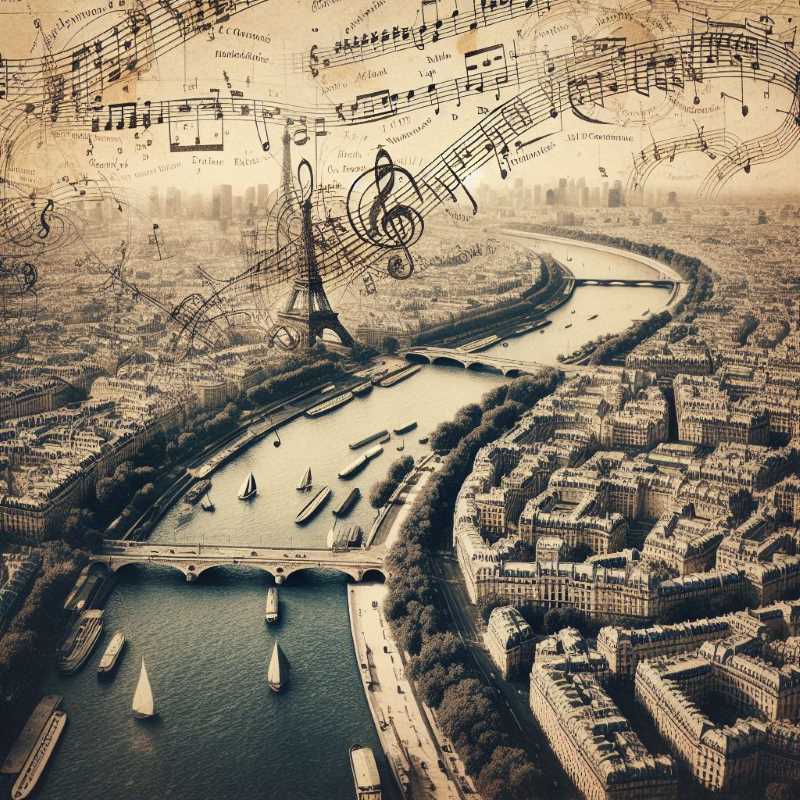
Musical notation has undergone changes throughout history to adapt to different needs. In 1859, Simón Dieudonné wanted to revolutionize it by proposing a new method that used numbers to represent musical notes. This method used the numbers from 1 to 7 to represent the notes, silent applause and points to indicate extensions, among others. Despite its authenticity, the authorities of the Ministry of Development, Colonization, Industry, and Commerce rejected its patent application, arguing that its foundations were not sufficiently advantageous for musical teaching.
In the history of music, various musical notation systems have emerged, which are writing methods used to graphically represent musical performances. Musical notation has undergone changes to adapt to the expressive needs of the social, political, cultural, religious and artistic conditions of each era. In this sense, in 1859, Simón Dieudonné invented a method that used numbers in the formation of the musical writing system to facilitate its teaching.
Dieudonné believed that his teaching system deserved to be recognized, and he petitioned the Ministry of Development and Public Works to grant him a patent to be recognized as the inventor of a method of writing music using numbers. In a letter addressed to the authorities, he related that for some years he dedicated himself to the study of music and reflected on the creation of a learning method for vocal music or music composed using voices, which may or may not be accompanied by instrumental sounds. He intended to make the learning process easier and more comfortable.
In that letter, he related that after studying in Paris, a city where he interacted with distinguished professors, he was able to make his dream of creating a method that would contribute to the teaching of vocal music come true. In addition to his arduous study of the subject, he had the help and encouragement of those who guided him in the musical field. In this way, he managed to perfect the development of the idea when he built the cardinal basis of his system, which consisted of replacing musical notes with numbers.
The letter contained concept maps explaining his method, which stated that only three types of symbols would be used to accurately capture all musical ideas. These symbols correspond to the numbers from 1 to 7, which denote the seven musical notes (do, re, mi, fa, sol, la, si, do) while the silent claps and the period would indicate the prolongations. For low tones, a dot is added below the respective numbers (1, 2, 3, 4, 5, 6, 7). Mid tones are represented by the numbers without any modification (1, 2, 3, 4, 5, 6, 7) and high tones are indicated by a dot above the numbers. The divisions would be marked with one or more lines above the numbers, allowing the value of the notes to be clarified precisely. Sharps are drawn obliquely crossing the corresponding number, while flats are represented with the same line, but in the opposite direction.
However, the explanation that Simón Dieudonné offered to the authorities was not enough. Although his application was authentic, they determined that his foundations were not entirely advantageous for music teaching; therefore, they decided to deny him the patent privilege.
History is not only made up of great stories, but also of small stories that weave the memory of our country. Consult the funds kept by the General Archive of the Nation, where you can find documents with multiple stories from the past.
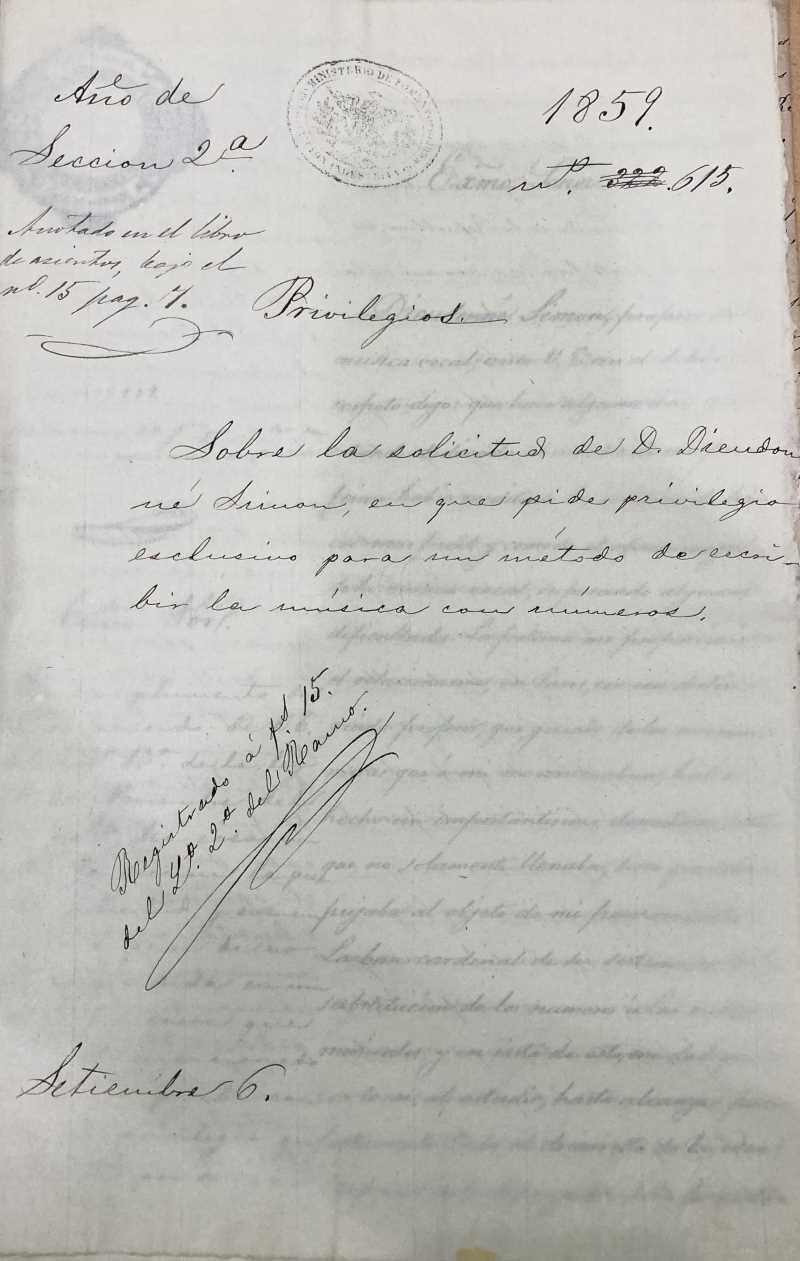
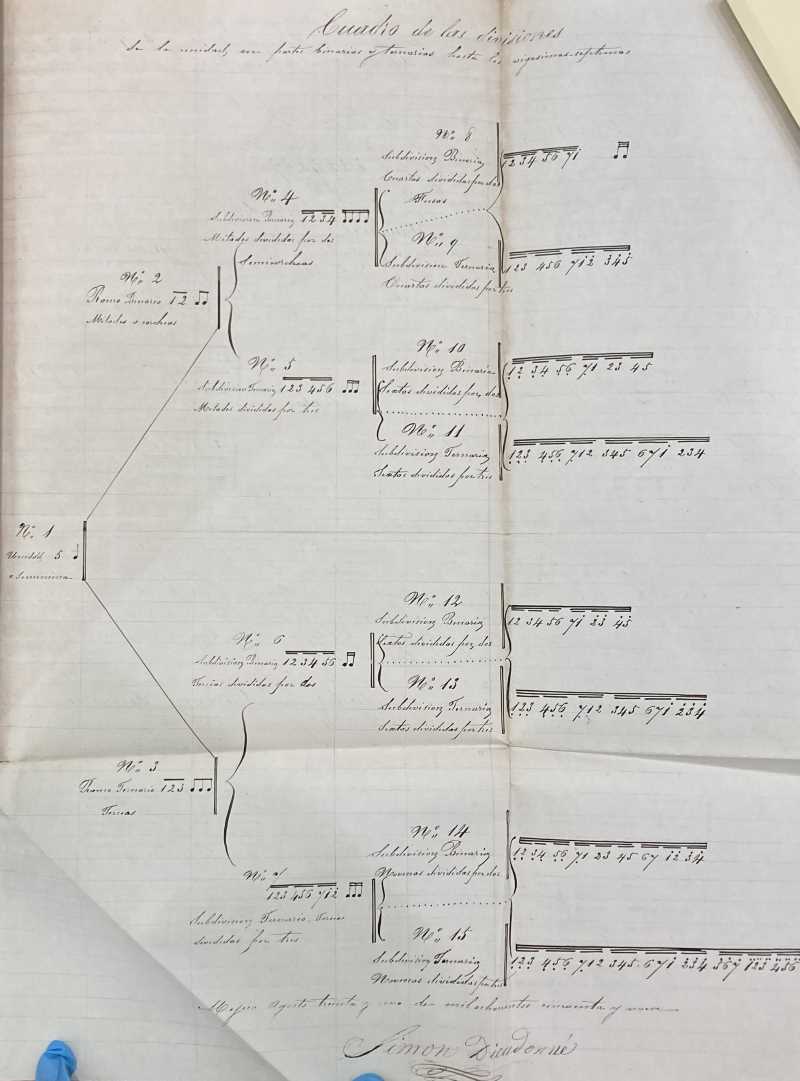
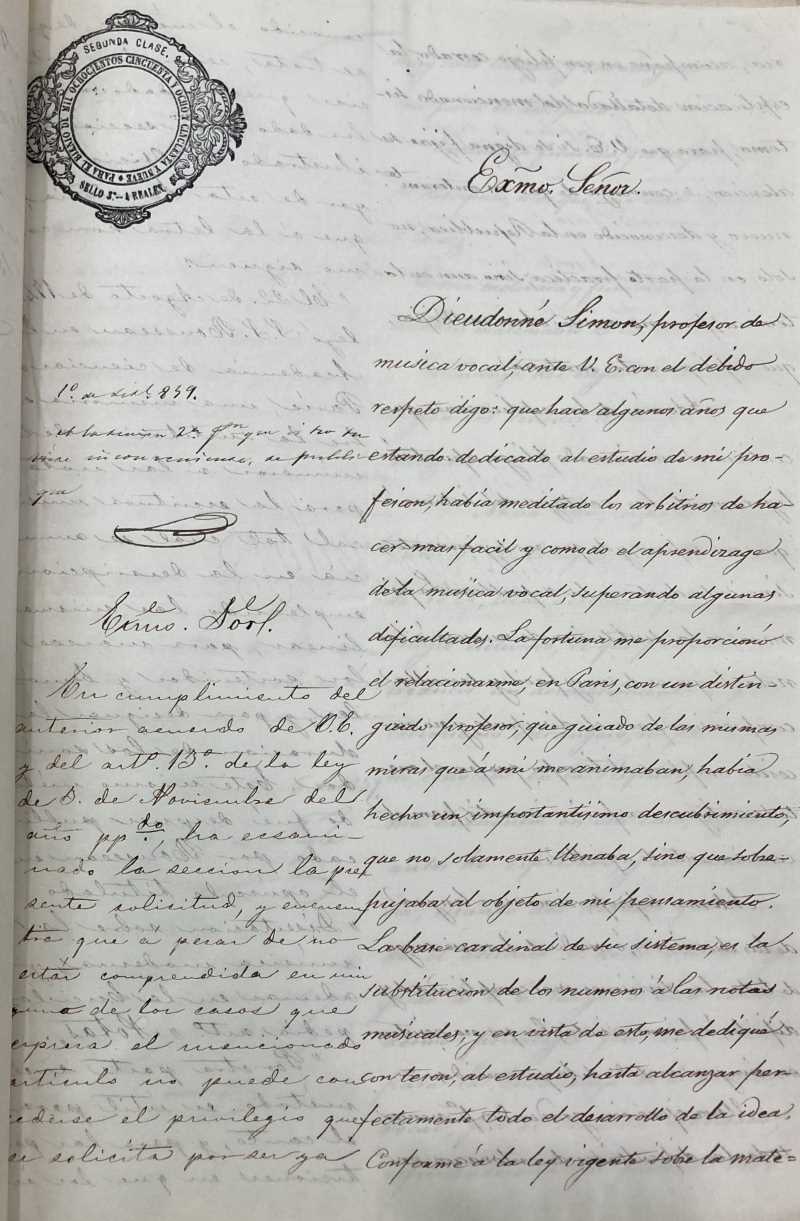
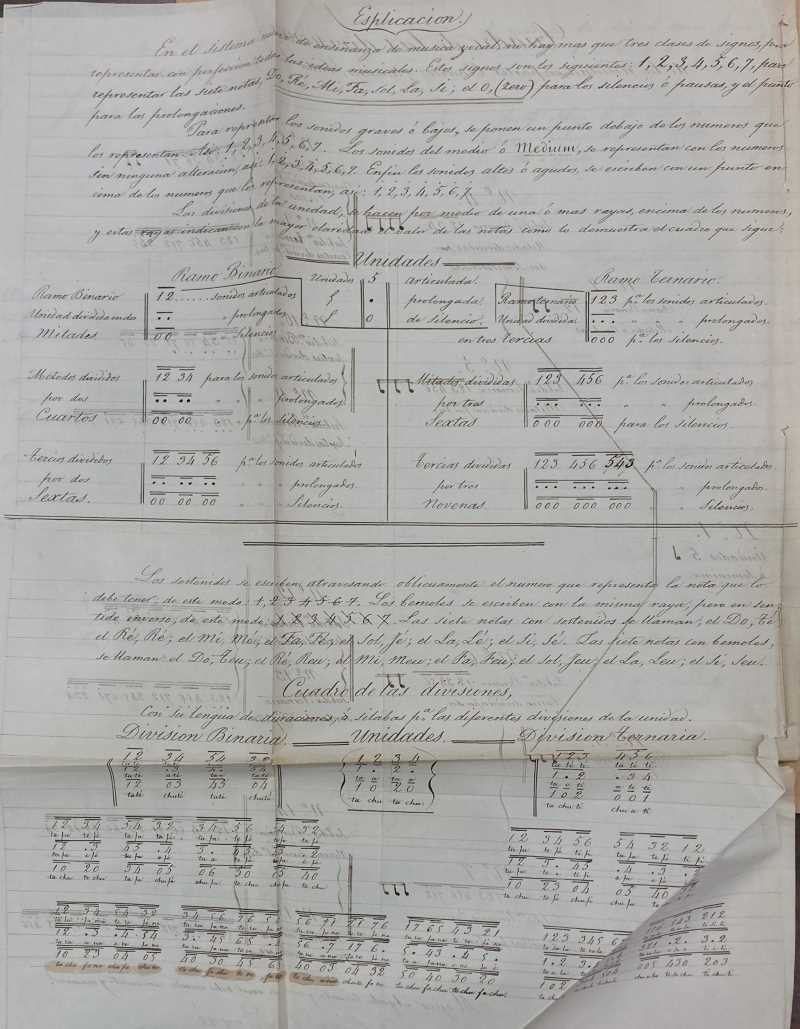
Source: Archivo General de la Nación. “Armonía numérica: la enseñanza de la música a través de los números.” gob.mx, http://www.gob.mx/agn/es/articulos/armonia-numerica-la-ensenanza-de-la-musica-a-traves-de-los-numeros?idiom=es. Accessed 22 Apr. 2024.




